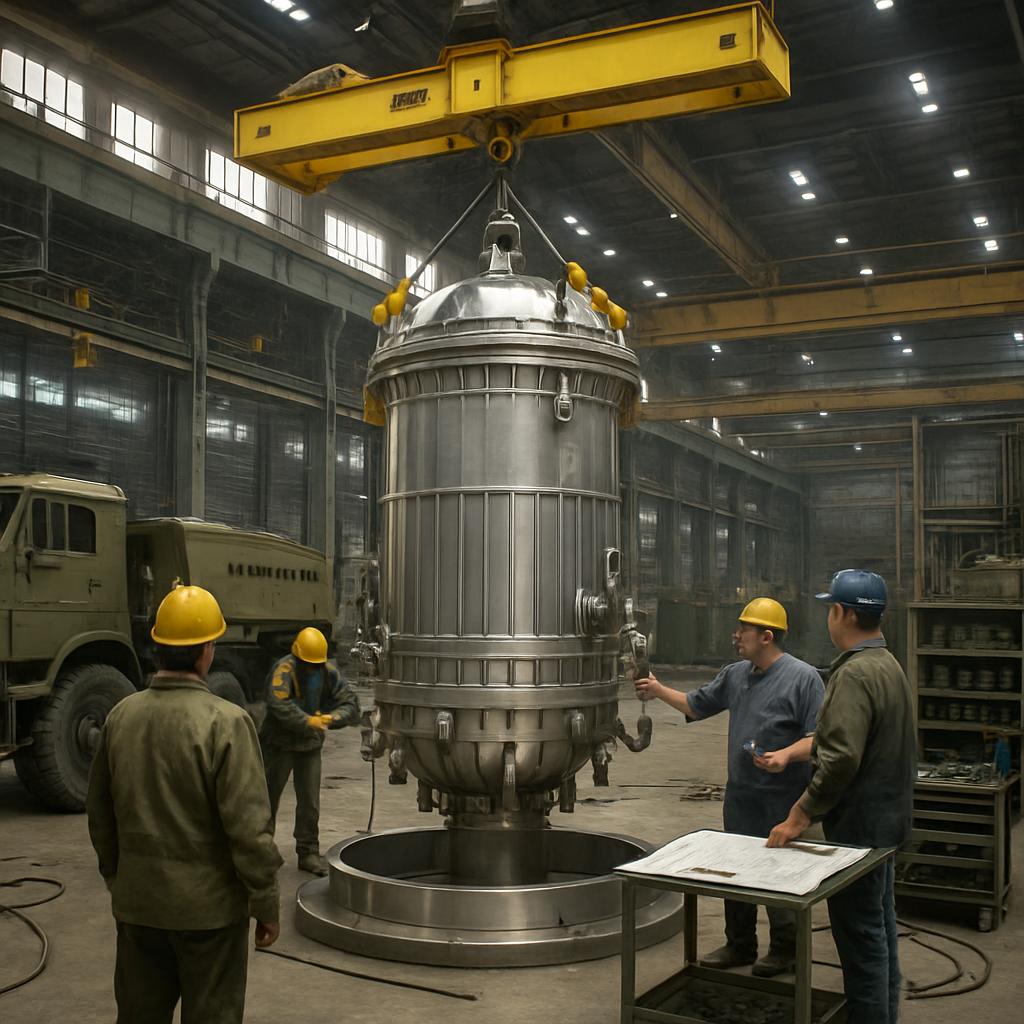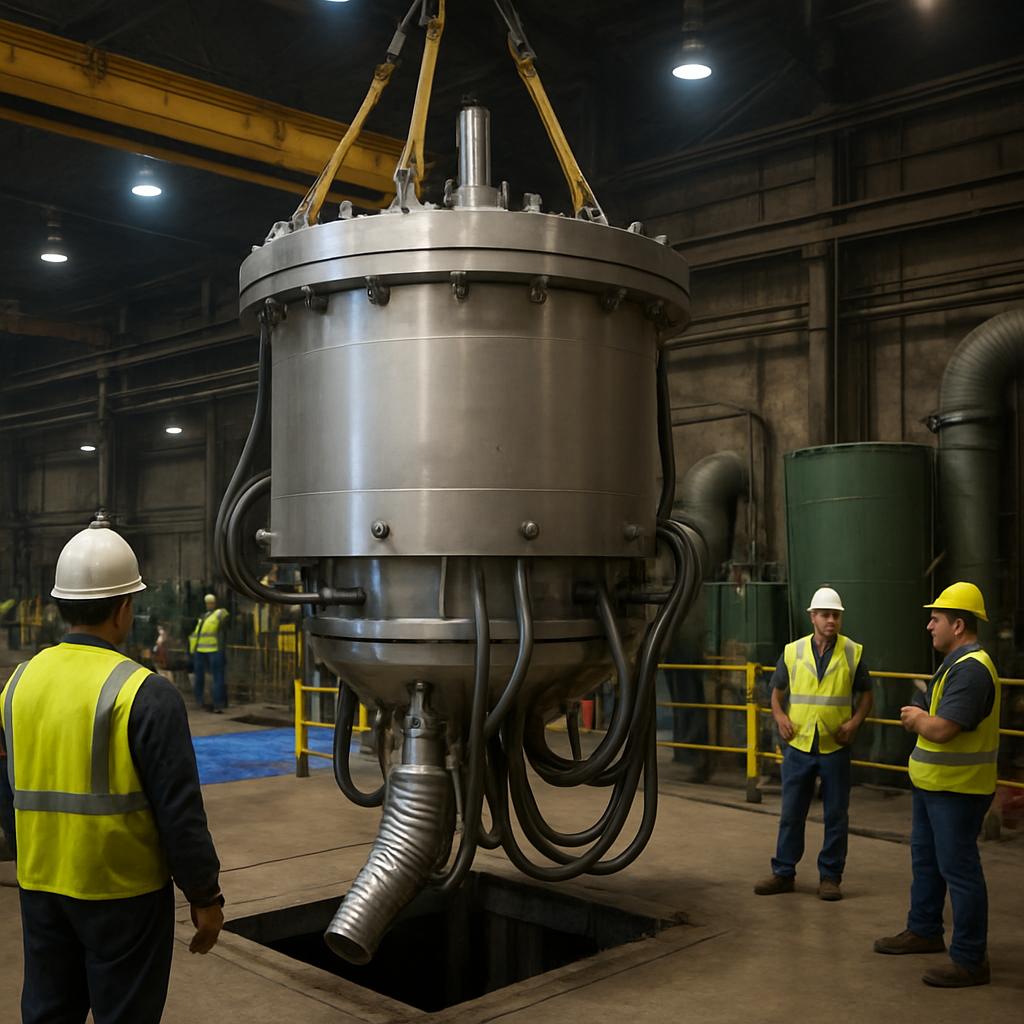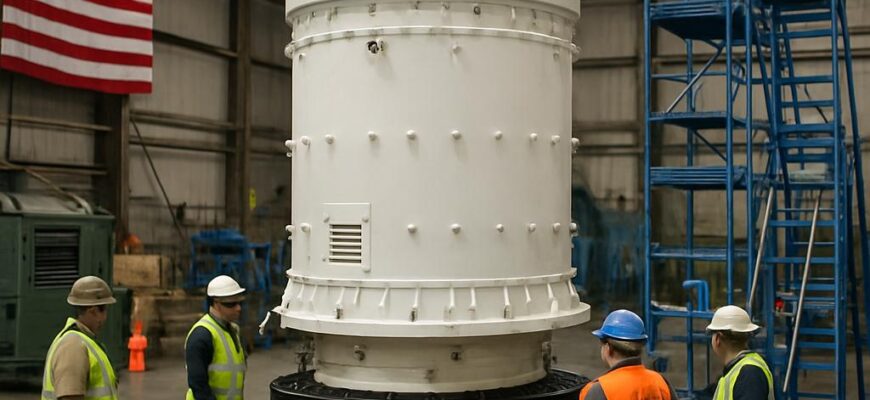The announcement that assembly of the first military micro-reactor has begun in the US landed like a low hum that promises to grow louder over the next few years. It’s a development that blends science, strategy, and logistics: compact nuclear power intended to give military units reliable electricity where grid connections are fragile or non‑existent. This project marks a new chapter in how the armed forces think about energy on the battlefield and in disaster zones.
- What exactly is a microreactor?
- Why the military wants microreactors now
- Partners, process, and the path to assembly
- How microreactor assembly actually looks
- Technical features: what makes a microreactor different
- Fuel and refueling: the HALEU conversation
- Strategic uses and deployment scenarios
- Benefits beyond the battlefield
- Regulatory and safety hurdles
- Public perception and community engagement
- Risks, trade-offs, and hard questions
- Comparative snapshot: microreactor vs. other options
- What the timeline usually looks like
- Economic and industrial implications
- International context and export considerations
- A human view: logistics officers and energy planners react
- Environmental and waste-management considerations
- What to watch next
- Balancing innovation with prudence
- Final thoughts
What exactly is a microreactor?
Microreactors are small, factory-built nuclear power plants designed to produce electricity and heat on a megawatt scale. Unlike large commercial reactors that supply cities and regions, microreactors focus on localized and mobile power needs, often sized to support bases, remote installations, or emergency hubs.
Designs vary, but most share common goals: compactness, modular construction, long refueling intervals, and enhanced safety features. Some use advanced fuels such as high-assay low-enriched uranium (HALEU) to achieve prolonged operation in a small footprint, while others rely on passive safety systems that reduce operator workload and mitigate accident scenarios.
Why the military wants microreactors now
Modern military operations are intensely power-dependent. Communications, sensors, sensors-processing, directed-energy systems, and field hospitals all require steady electricity. When the local grid is unreliable — or when forces must operate off-grid — fuel convoys become the default solution. Those convoys are expensive, vulnerable, and logistically complex.
Microreactors promise to change that dynamic by providing a compact, long-duration power source that can reduce or replace fuel logistics. For commanders, that means fewer supply lines to guard, fewer convoys at risk, and greater operational endurance for distributed forces. It’s not just about saving money; it’s about changing tactical possibilities.
Partners, process, and the path to assembly
Large civilian programs and military projects rarely happen in isolation. This microreactor effort is a cross-sector undertaking involving government agencies, national laboratories, private contractors, and regulatory bodies. The collaboration combines engineering expertise, manufacturing capability, and oversight to move a complex machine from design to hardware.
Assembly is a significant milestone in that pipeline. It signals movement from drawings and component manufacture toward integrated systems testing. Typically, after assembly comes a period of rigorous testing — first as part of factory acceptance testing, then under experimental conditions at a secure site — followed by regulatory reviews before any demonstration operations can begin.
How microreactor assembly actually looks
Imagine a factory floor where precision meets heavy industry: modules arrive by truck, reactor vessels are craned into place, and control systems are connected in a deliberate choreography. Assembly teams follow strict protocols, checking tolerances, bolting together shielding segments, and routing instrumentation for thermal, pressure, and radiation monitoring.
Because these plants are modular, much of that work occurs in controlled environments before transport. The goal is to reduce on-site construction to a minimum — a few days or weeks rather than months or years. That factory-built model is central to the promise of speed and repeatability for future deployments.
Technical features: what makes a microreactor different
Several technical choices set microreactors apart from traditional nuclear plants. First is scale: they operate at a fraction of the thermal and electrical output of commercial reactors, designed intentionally for localized needs. Second is modularity: components are engineered for factory fabrication and field assembly.
A third distinction is safety philosophy. Many microreactor concepts emphasize passive cooling and fail-safe designs that do not require active intervention to prevent core damage. Combined with robust containment and remote monitoring, these features aim to reduce both operational risk and maintenance demands in austere environments.
Fuel and refueling: the HALEU conversation
Fuel choice is a technical and policy issue. High-assay low-enriched uranium (HALEU) can enable compact cores with extended operational cycles, a feature attractive for military missions that require months or years of unattended power. However, producing, securing, and regulating HALEU introduces supply-chain and proliferation considerations.
Because HALEU is in limited global supply today, the scale-up of microreactor deployment depends partly on ramping up domestic HALEU capabilities and ensuring tightly controlled distribution channels. That interdependence has prompted government investment in supply-chain development alongside reactor prototypes.
Strategic uses and deployment scenarios
Microreactors have a range of potential military applications. They can power forward operating bases, support expeditionary airfields, sustain maritime or arctic installations, and provide resilient energy following natural disasters or cyberattacks on critical infrastructure. Their compact footprint makes them appealing for forward presence missions where weight and space are at a premium.
The strategic calculus also includes deterrence by resilience: a force that can keep lights on, sensors running, and logistics moving even when an adversary targets critical infrastructure gains tactical flexibility. In short, microreactors offer a different kind of operational assurance than simply adding more backup diesel generators.
Benefits beyond the battlefield
Military microreactor development carries spillover potential for civilian and humanitarian applications. Remote communities, disaster relief operations, mining sites, and isolated industrial facilities can all benefit from compact, reliable power sources that reduce dependency on diesel or long transmission lines.
For energy planners, microreactors offer a new tool in the portfolio of options to improve grid resilience and support remote electrification projects. Their factory-built nature and modularity may lower costs over time as serial production scales up, much as happened with other modular technologies in the past.
Regulatory and safety hurdles
Nothing nuclear moves forward without rigorous regulatory scrutiny. In the United States, the Nuclear Regulatory Commission (NRC) reviews designs and operating plans to ensure protection of public health and safety. Military projects add layers of classified requirements, environmental reviews, and interagency coordination, complicating timelines.
Safety reviews examine accident scenarios, emergency planning, and potential radiological impacts. Environmental assessments analyze potential land use and ecological effects. Because these reactors may be sited near civilian areas or operate under unique conditions, regulators take a cautious, data-driven approach to certification and licensing.
Public perception and community engagement
Public acceptance is a practical concern. Nuclear energy carries strong opinions on both sides, and communities often demand transparency before welcoming new installations. Military projects sometimes face additional skepticism because of security protocols that limit public information.
Successful deployment typically depends on early and honest community outreach: explaining safety measures, emergency planning, and environmental safeguards in clear language, and answering questions about decommissioning and waste management. Trust is built through clarity and accountability, not secrecy.
Risks, trade-offs, and hard questions
No technology is risk-free, and microreactors pose trade-offs that decision-makers must weigh. While they reduce fuel convoy risks, they introduce nuclear material to more locations, raising questions about security and safeguarding. The lifecycle costs, including eventual decommissioning, are also part of the calculus.
Questions remain about economics, too. Will serial production bring prices down enough to justify replacements for diesel fleets? How fast can a domestic HALEU supply chain grow? And how will geopolitical considerations shape access to the specialized technology and materials needed for broader adoption?
Comparative snapshot: microreactor vs. other options
To clarify trade-offs, here is a compact comparison showing where microreactors sit relative to traditional generators and renewable-plus-storage solutions. This table simplifies complex choices but highlights the core distinctions decision-makers consider.
| Characteristic | Microreactor | Diesel generators | Renewables + storage |
|---|---|---|---|
| Typical power scale | Megawatts (localized) | Kilowatts to megawatts (portable) | Variable; dependent on storage |
| Operational duration | Months to years without refueling | Hours to days depending on fuel supply | Hours to days with batteries; limited without fuel |
| Logistics footprint | High upfront; low recurring | Low upfront; high recurring (fuel convoys) | Variable; high battery requirements |
| Security & regulation | High; nuclear oversight required | Moderate; fuel supply vulnerable | Lower regulatory barrier; supply-chain for batteries |
What the timeline usually looks like
From design to demonstration, microreactor projects go through phases: concept, detailed engineering, component fabrication, assembly, testing, and certified operation or field demonstrations. Assembly is the midpoint milestone that transforms parts into a system ready for testing.
Even after assembly begins, expect months of rigorous mechanical, thermal, and systems testing. Demonstration operations follow successful tests and regulatory approvals. For military planners, the emphasis is on achieving a reliable, predictable capability before operational use.
Economic and industrial implications

Microreactor programs stimulate manufacturing, supply chains, and workforce development. Building multiple units means factories must scale up, suppliers must meet strict quality standards, and technicians need specialized training. That industrial mobilization can have ripple effects in regions where components are produced.
Defense budgets and procurement strategies will shape the economics. If the military commits to a fleet of microreactors, manufacturers have incentives to invest in serial production. Those investments, in turn, could reduce unit costs and open civilian markets for the technology.
International context and export considerations
The U.S. is not alone in pursuing small nuclear solutions; several countries are exploring microreactors and small modular reactors (SMRs). International interest raises export-control and nonproliferation questions. Any military-focused program must balance technology sharing with safeguards to prevent misuse.
Export rules and alliances will influence how designs are shared or sold abroad. Partner nations that require resilient power for remote bases or disaster response could find microreactors attractive, but their adoption will depend on regulatory frameworks, supply-chain access, and public acceptance in each country.
A human view: logistics officers and energy planners react
In conversations with logistics officers and energy planners over the years, the recurring theme is practicality. Where I have reported on field exercises, commanders speak appreciatively of anything that reduces the convoy tempo and the troops needed to protect fuel runs. Microreactors answer that need in a radical way — if the technical and political pieces align.
Planners also emphasize training and lifecycle support. Deploying a novel technology matters less if no one on the ground knows how to operate, maintain, or troubleshoot it. That’s why training programs and sustained industrial support are as critical as the reactor hardware itself.
Environmental and waste-management considerations

Although microreactors generate far less waste than large commercial reactors in absolute terms, they still produce spent fuel and radioactive materials that require secure handling and disposal. Lifecycle planning must include clear pathways for safe storage, transport, and final disposition of used fuel.
Because many projects target remote or ecologically sensitive areas, environmental reviews examine potential impacts carefully. Planning for decommissioning from the outset reduces long-term environmental risks and clarifies responsibilities for cleanup and restoration.
What to watch next
Now that assembly has started, watchers should track test results, regulatory milestones, and supply-chain developments — especially HALEU availability. Each successful test and completed certification step will reduce uncertainty and bring the technology closer to operational use.
Equally important are public briefings and community engagement: clear updates on safety, timeline, and environmental reviews will shape acceptance and the pace of future deployments. Investors and partners will watch procurement decisions that signal long-term commitments.
Balancing innovation with prudence
New technology demands both courage and caution. Microreactors could transform military logistics and support humanitarian missions, but success depends on meticulous engineering, responsible regulation, and transparent engagement with stakeholders. The assembly milestone is promising, but it is only the beginning of a long, careful process.
For engineers and planners, the lesson is familiar: the most elegant idea still needs supply chains, training, oversight, and time to mature. For policymakers, the task is to align resources and governance so that the promise of microreactors becomes a practical, safe capability rather than an unfulfilled ambition.
Final thoughts
Watching a novel energy technology move from concept to metal and wires is always a thrill. As a writer who has followed energy and defense projects for years, I see this as a pivotal moment that could reshape how the military and remote communities think about power. Assembly of the first military micro-reactor has begun in the US, and with it comes a host of opportunities and responsibilities.
If you’re curious to learn more about this project and other advances at the intersection of technology and defense, explore our deeper coverage and related articles. Visit our technology and innovation news section for the latest reporting, analysis, and expert perspectives: https://themors.com/technology-innovation-news/.
For additional news and features across the site, check out https://themors.com/ and read more of our in-depth material.









